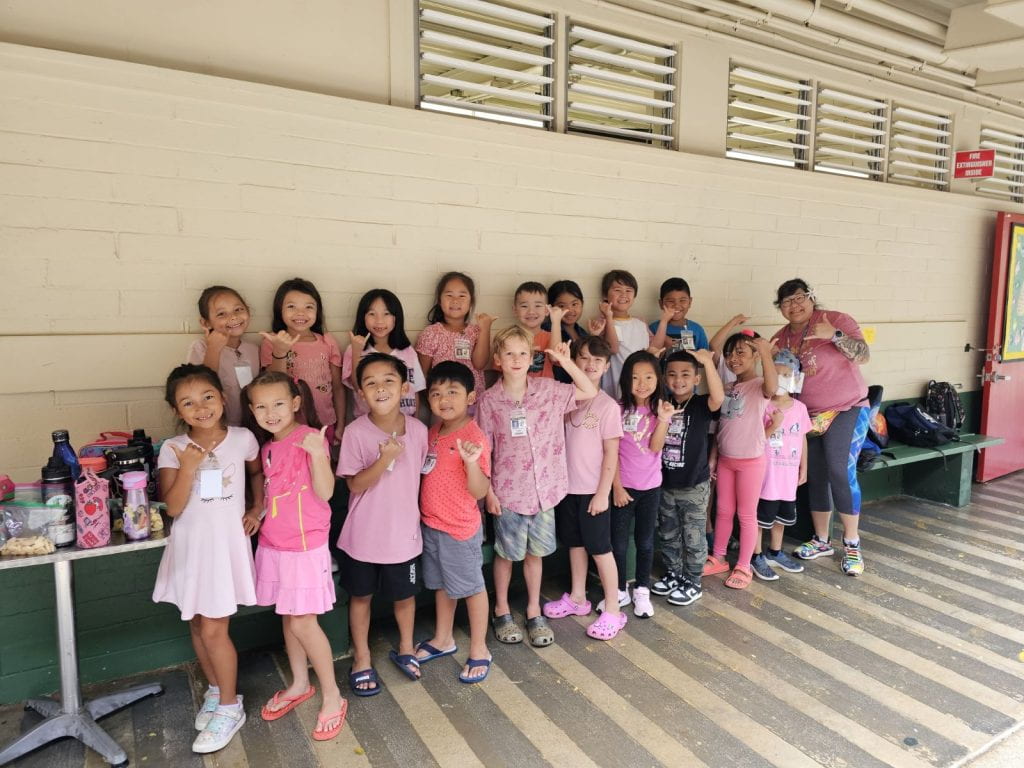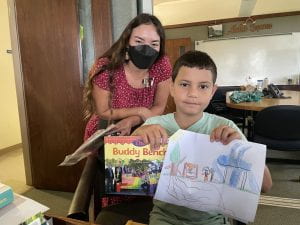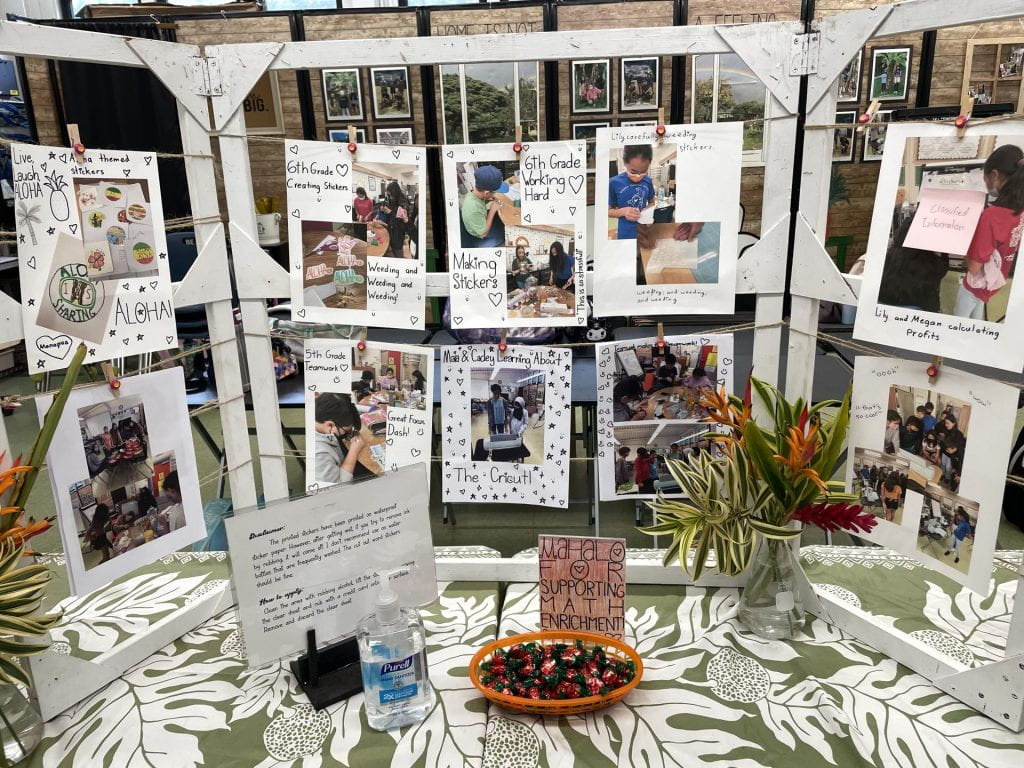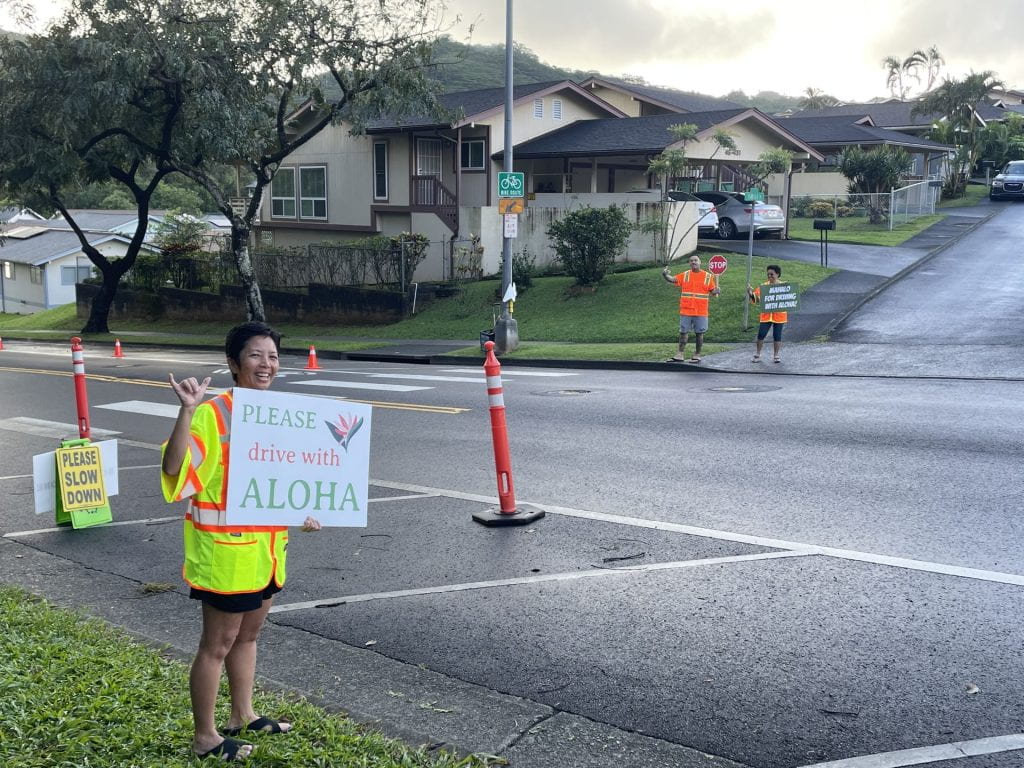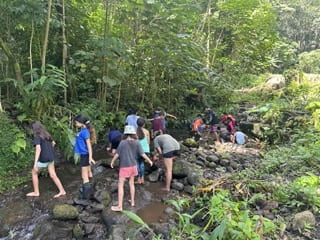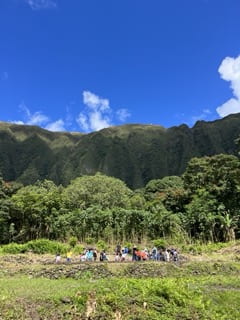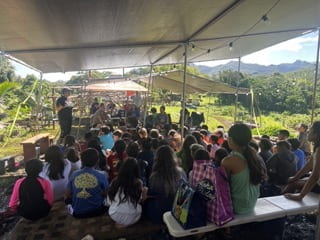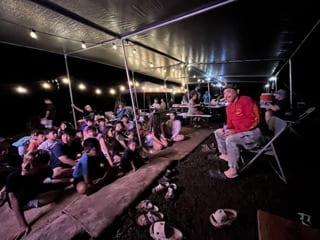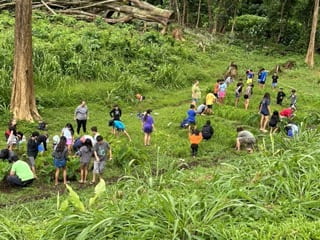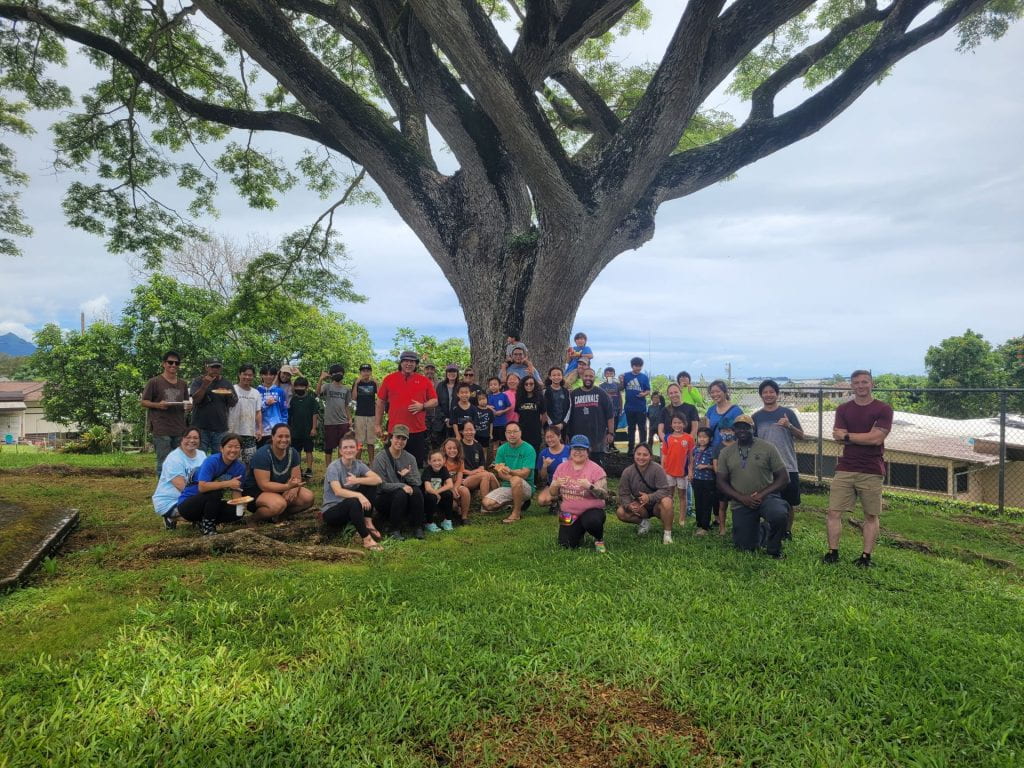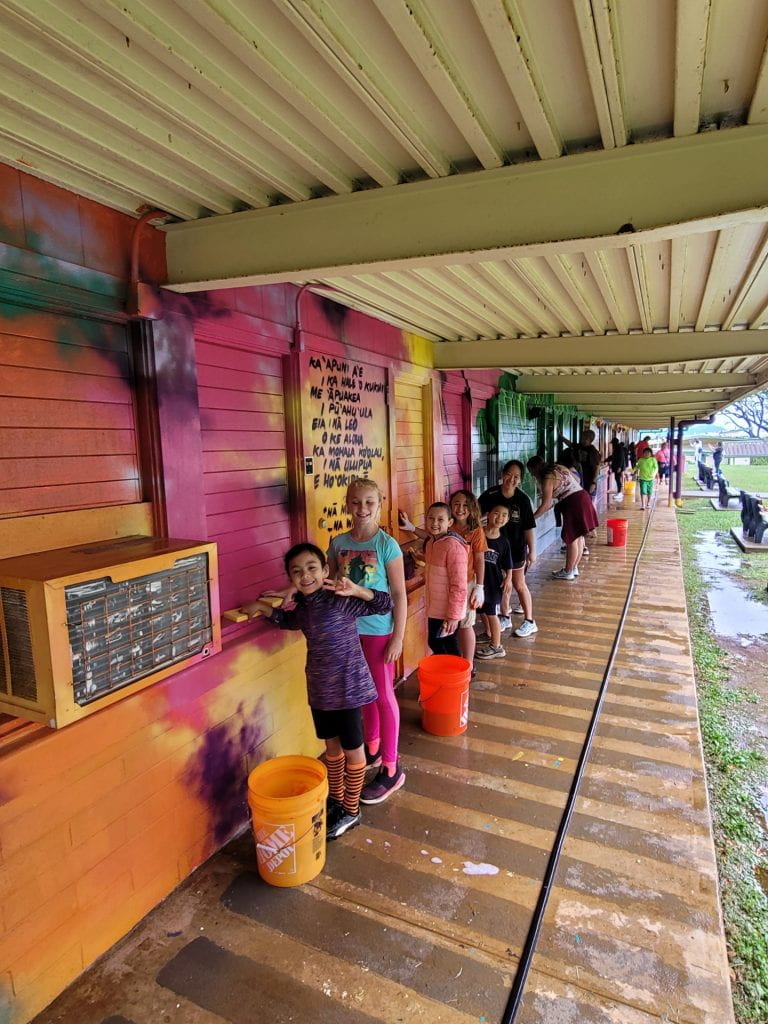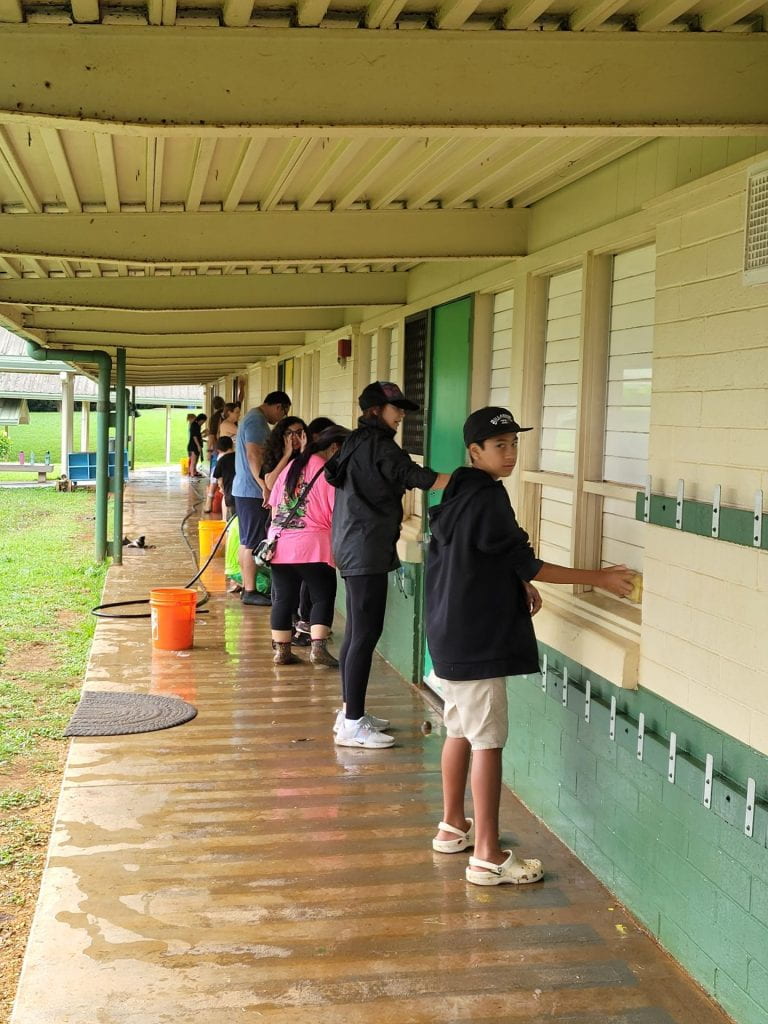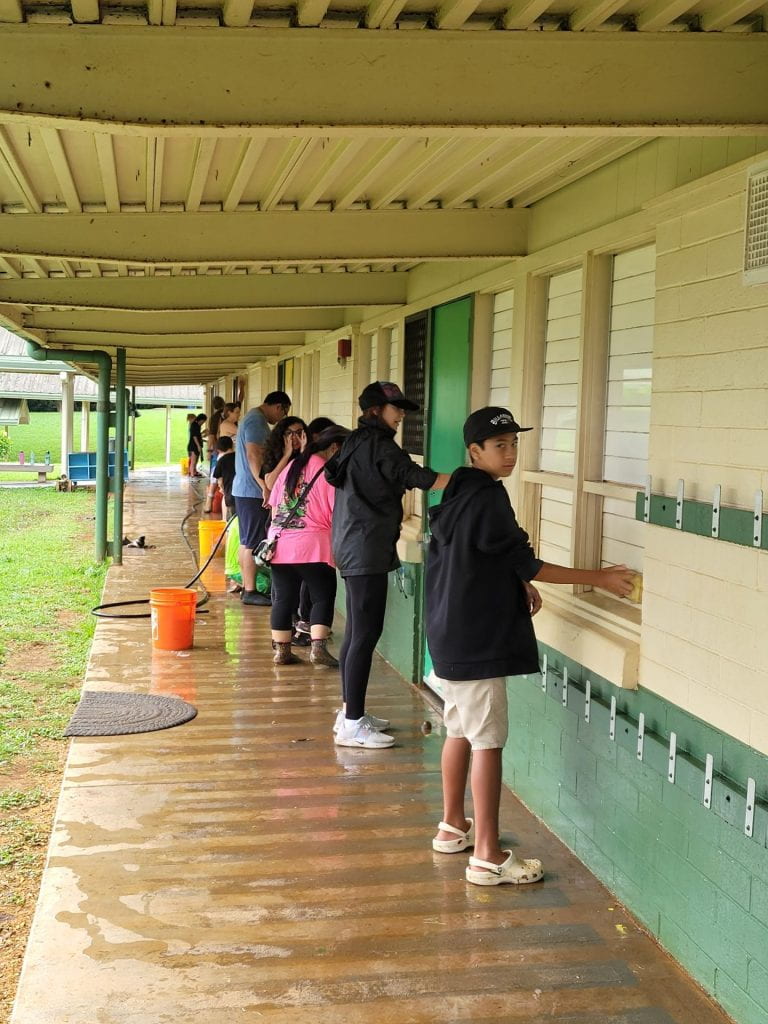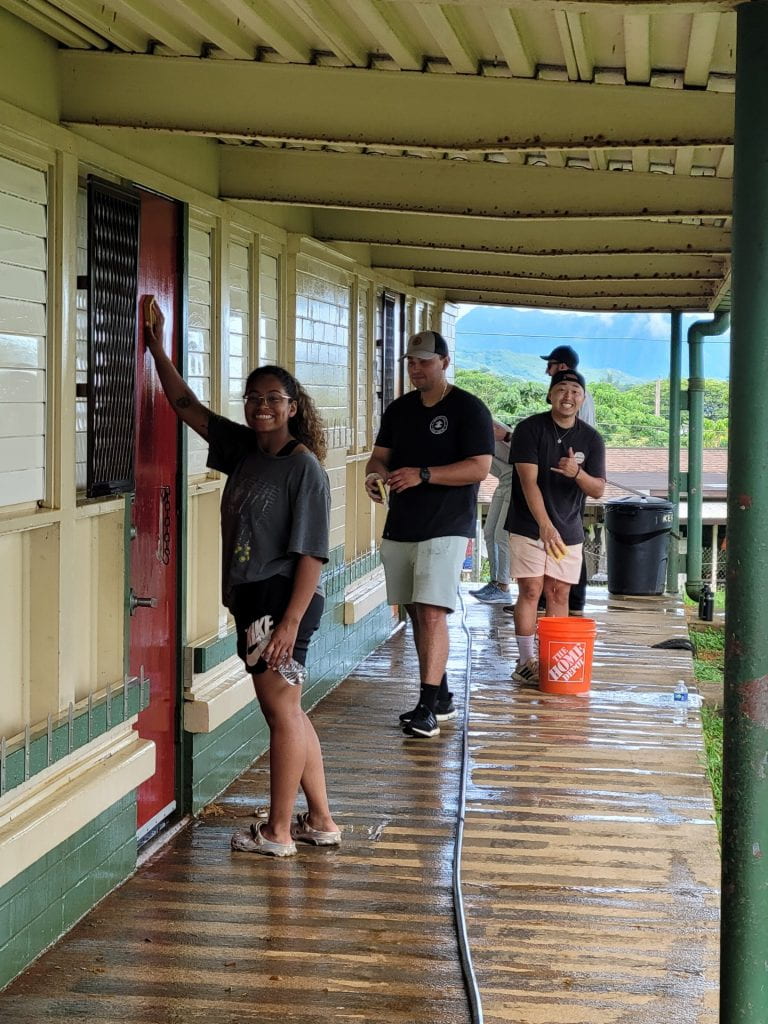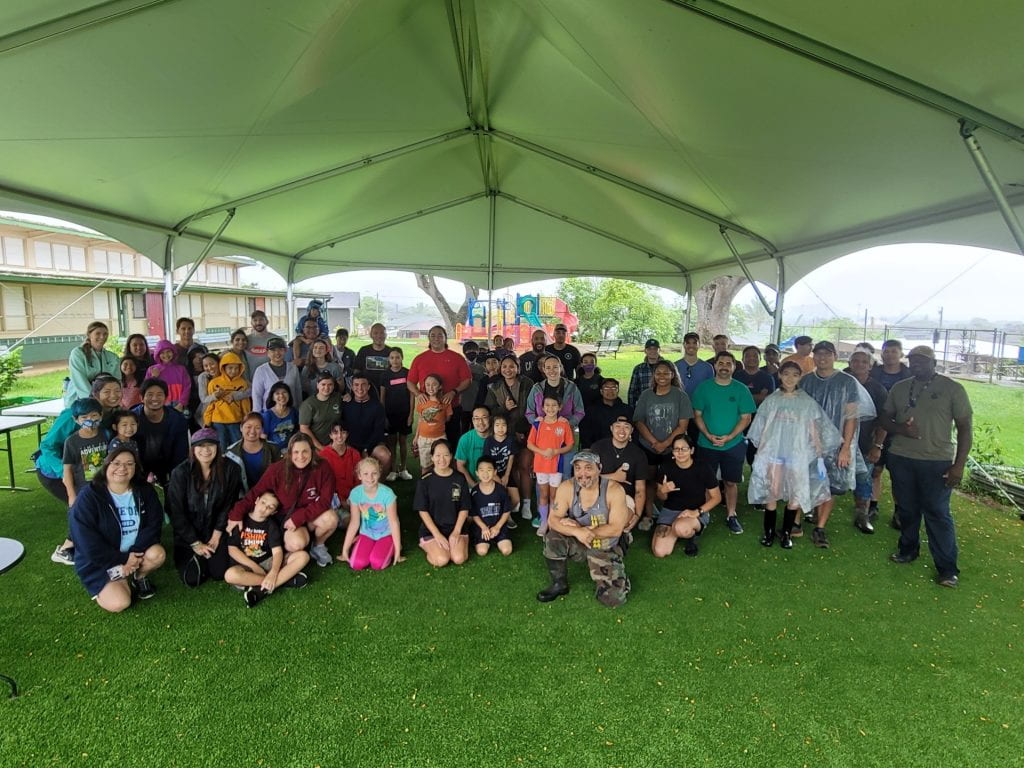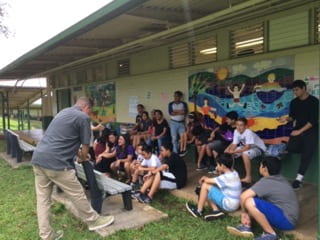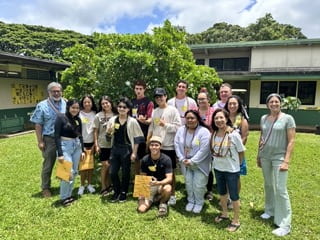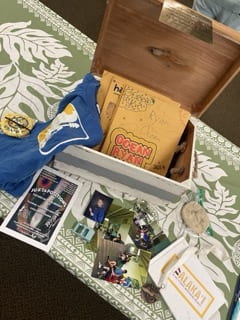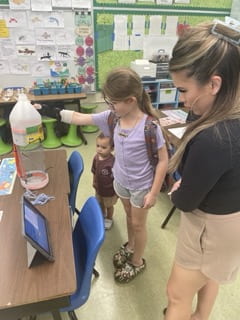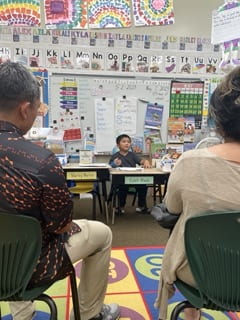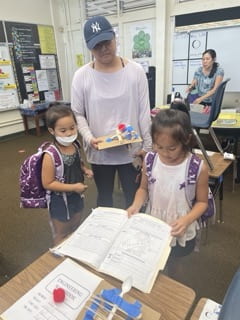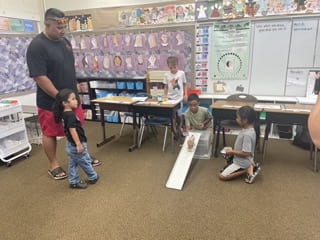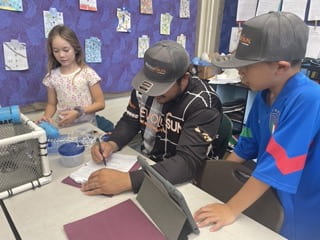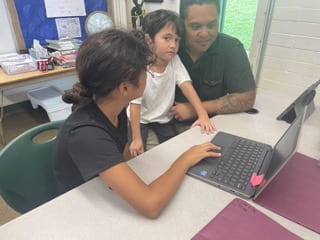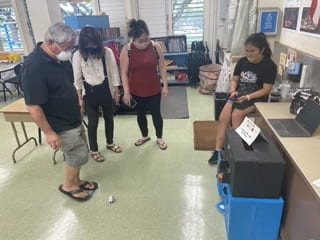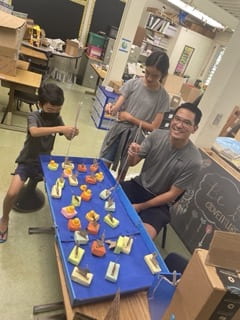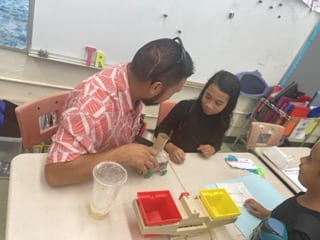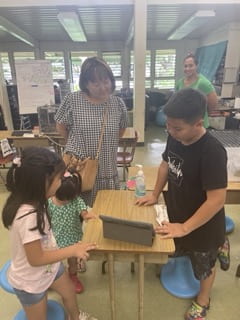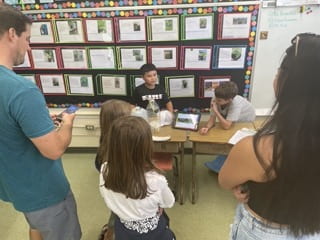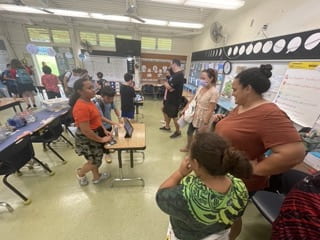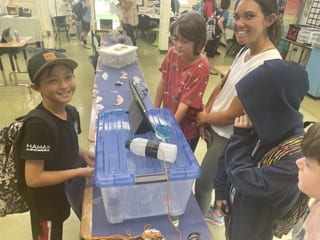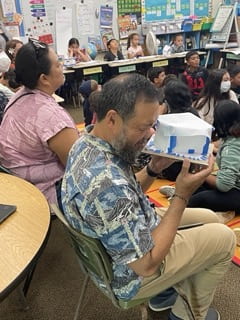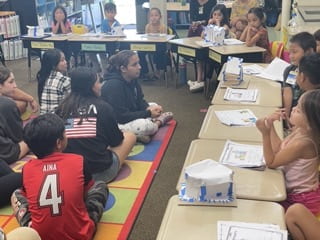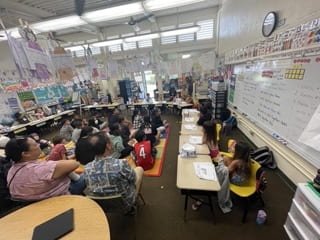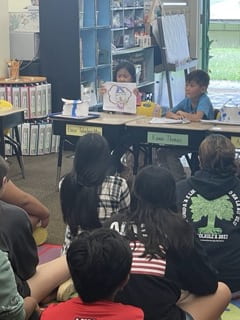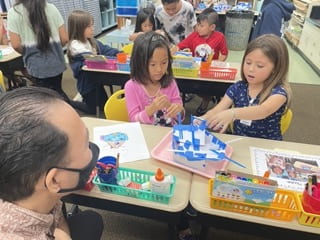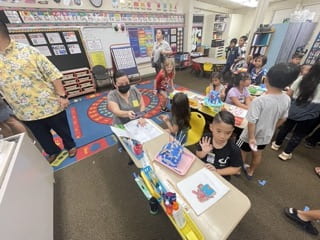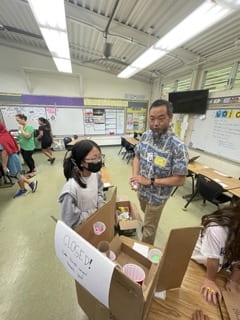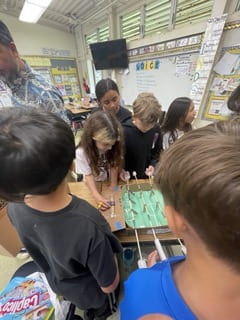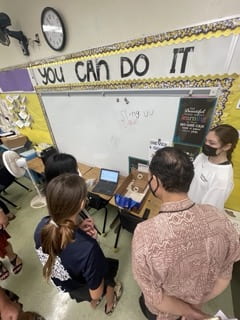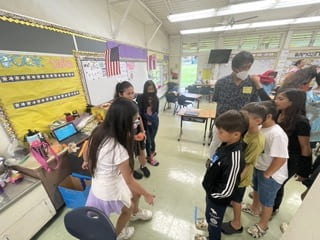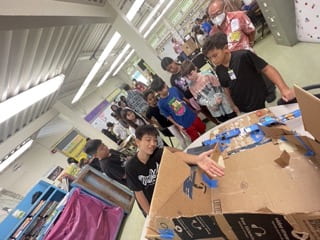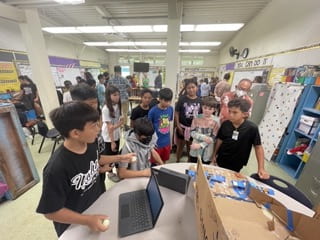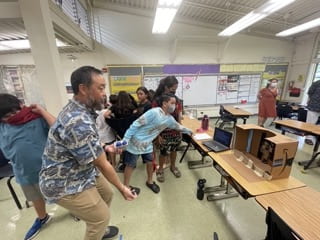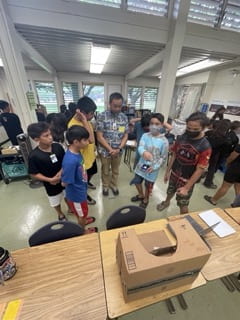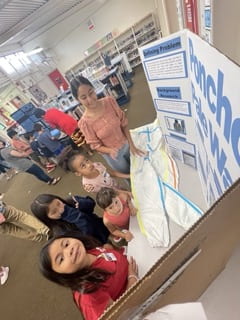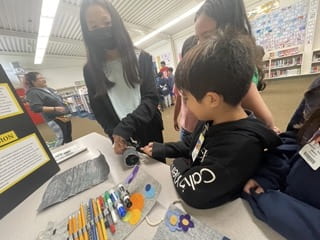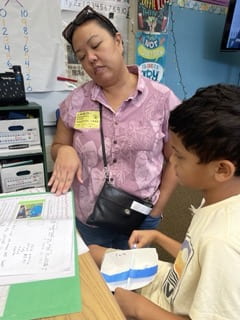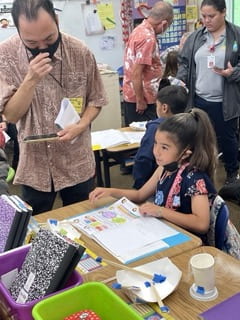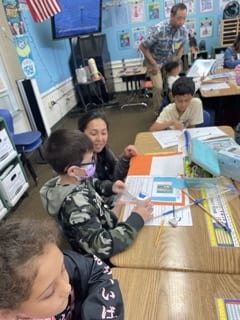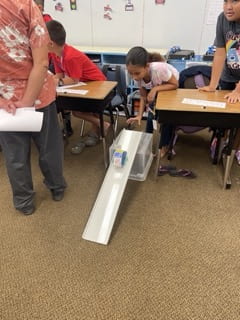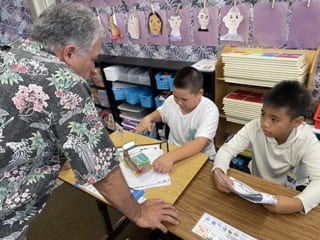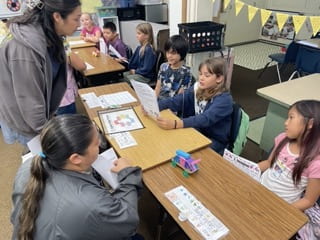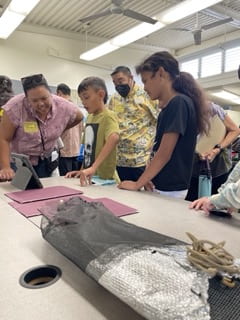Aka, with, care, and hai, to speak. To be tender of heart; meek
Andrews, Hawaiian Dictionary, 1865
ALOHA FOCUS FOR THE WEEK: AKAHAI
May Day comes just once every other year at Kāneʻohe Elementary School and if you’ve only been a part of our ʻohana since 2020, I apologize because the last two were acutely subdued due to the pandemic. The May Day of 2016, however, was an entirely different affair. That year, May Day culminated the celebration of Kāneʻohe Elementary’s 60th anniversary. As with the May Day’s of the past, previous principals were invited to attend and since it was an extra special occasion, we were treated to an extra special guest: former principal, Senator Daniel K Akaka. Senator Akaka was a enthralled by the student performances, cheering after each act. After the event, we gathered in a library for a staff luncheon and Senator Akaka warmly greeted everyone. As he posed for pictures with different members of our staff, he asked them for their names, inquired about who they are, and what they did at Kāneʻohe Elementary. He seemed genuinely interested in everyone and grateful for their service to children.
For me, as a school leader, it was a lesson in grace. No matter his prominence and his tremendous impact on Hawaiʻi, Senator Akaka was humble and kind. He certainly put others before himself. I remember him asking me if had gotten a chance to eat. Here he was, a kupuna, a special guest, and he’s looking after me.
In the two remaining years of his life, we were blessed to have several interactions with Senator Akaka including a book celebration with our younger students. In each case, he greeted everyone with kindness and a warm humility that made us feel cared for. It is no wonder Senator Akaka was known as the Aloha Ambassador as he definitely promoted how to Live Aloha with his every action.
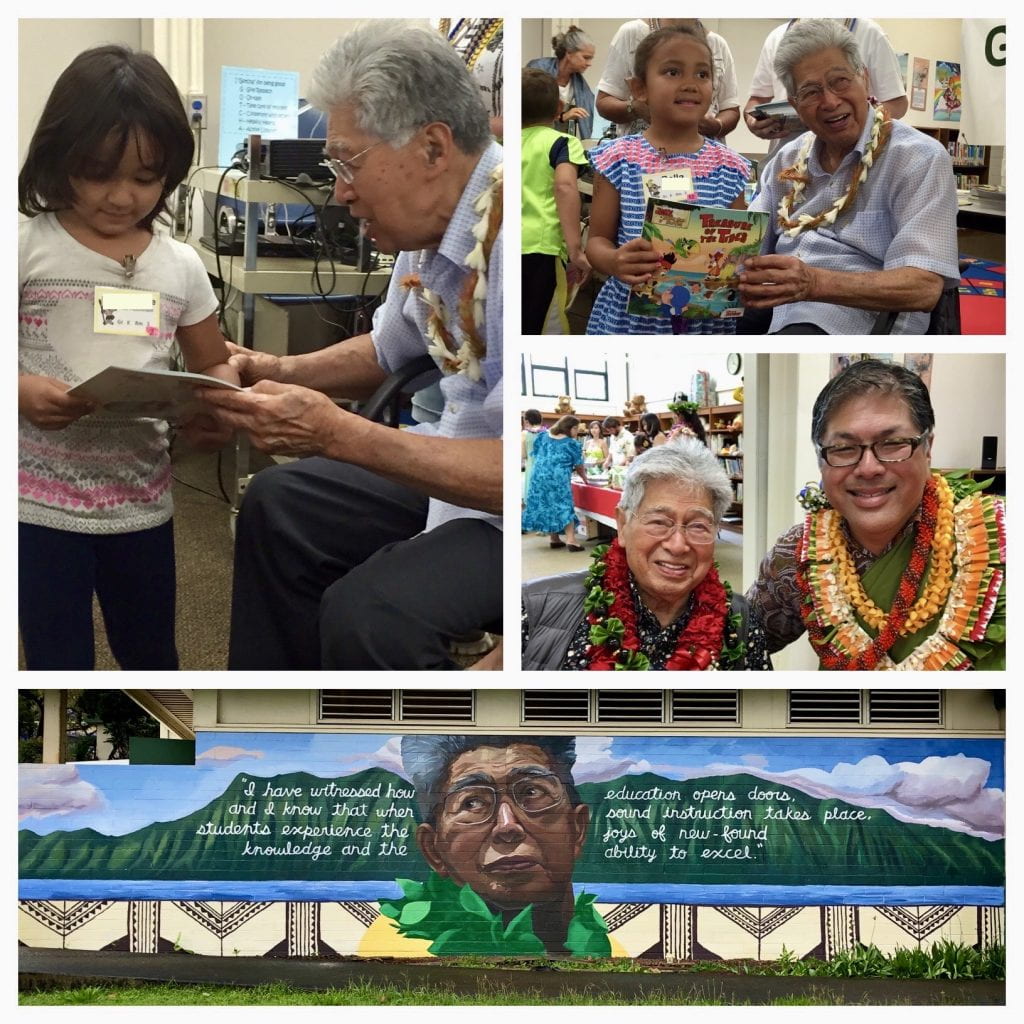
5 PURSUITS of AKAHAI
Inspired by Gholdy Muhammad
Please watch this: A Beach Day with Pa written by Senator Akaka’s grandson, David Mattson and his wife Elizabeth Mattson; illustrated by Brady Evans. Then with you child, answer the following:
- IDENTITY: What is something that you like to do at the beach with your ʻohana?
- SKILLS: Watch the video again, but this time turn the sound softer and read along with the narrator.
- INTELLECT: A single cigarette butt will contaminate 8 liters of water after just one hour of soaking in the waves. Research the impact plastic bags and other pieces of litter have on the environment.
- CRITICALITY: In the story Pa and the kids showed akahai by picking up the opala left by others. Other than the marine life, who may have benefitted from this act of aloha?
- JOY: Think about how you can do an act of aloha that benefits others at your next fun outing with your ʻohana. Share this idea with your ʻohana and commit to doing it.
ALOHA AKAKA WEEK CHALLENGE
This week, on what would’ve been his 99th birthday, we honor Senator Daniel Kahikina Akaka, the first U.S. Senator of Native Hawaiian ancestry. Senator Akaka was justifiably known as the Aloha Ambassador, consistently demonstrating akahai to all who had the opportunity to meet and connect with him. In this spirit, please join us in the Aloha Akaka Week Challenge by following the Senator’s examples on each day of the week:
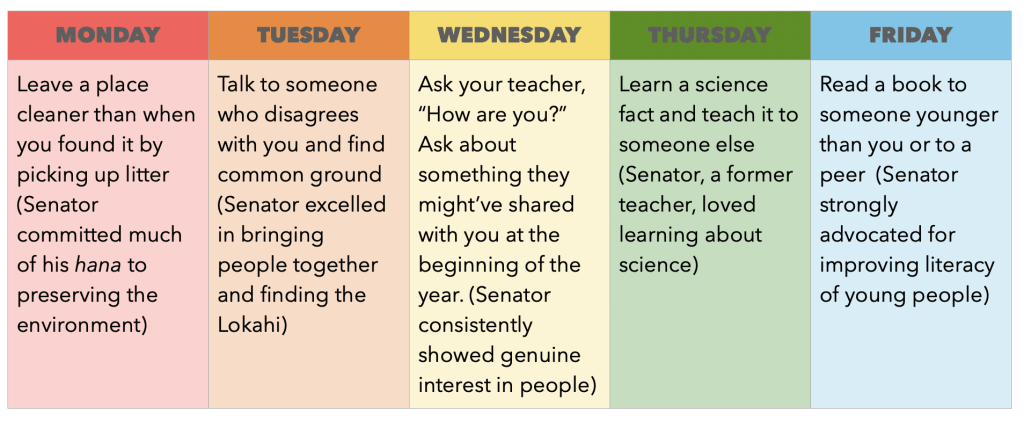
WANTED: SCHOOL COMMUNITY COUNCIL CHAIRPERSON
The School Community Council (SCC) supports the school through policy making, advising school administration, and developing school improvement initiatives. It is comprised of parents, community members, teachers, classified staff, students and administrators. We are currently seeking nominations for anyone willing to serve on the SCC as it’s chairperson. The chairperson presides at all meetings and signs letters, plans, reports, and other SCC communications. If you are interested or would like to nominate someone for this role, please complete this nomination form by Monday, September 25.
MAHALO NUI LOA OHANA100
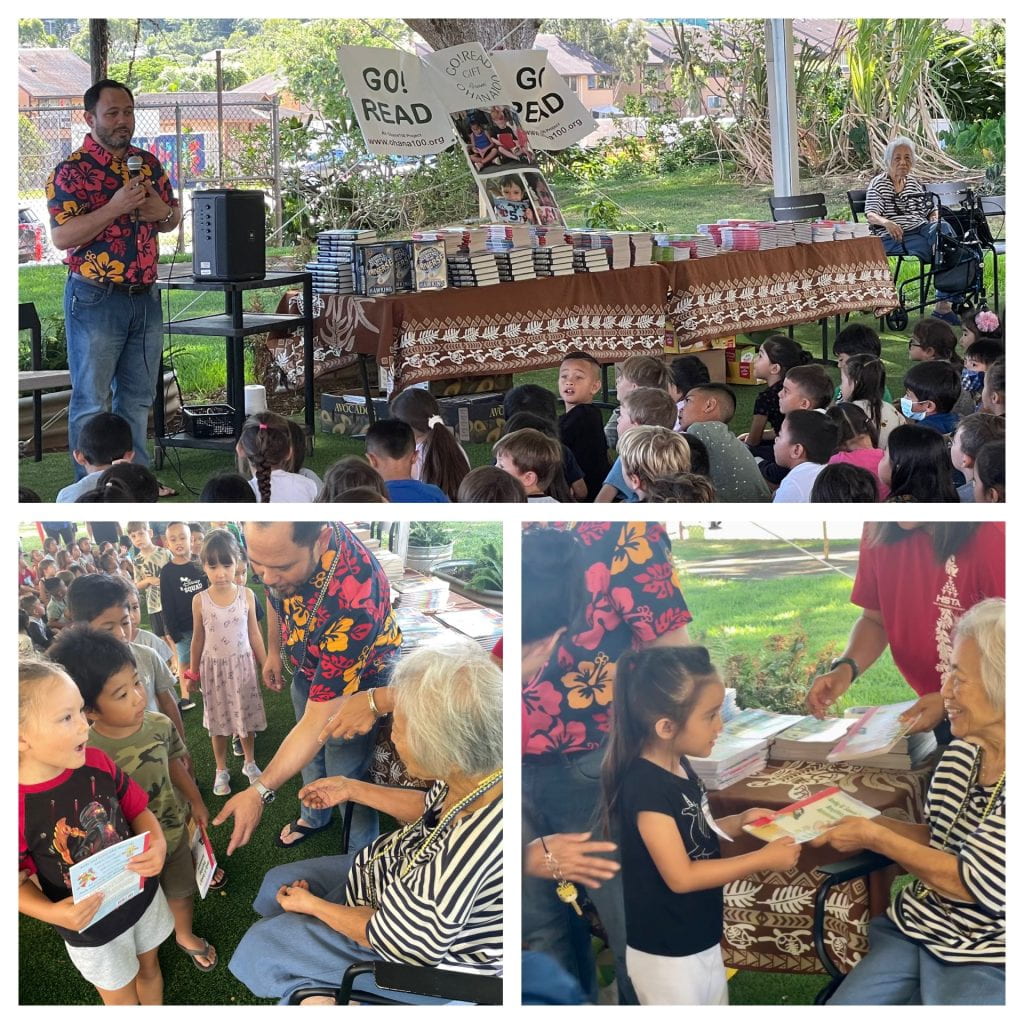
Inspired by Senator Akaka’s kāhea to educate young people, Ohana100 and it’s team of volunteers read to children, support literacty initiatives and donate new books to students. This past week, Ohana100 was spreading the aloha again at our annual book celebration. Each and every Kāneʻohe Elementary student received a new book to take home and read again and again with their ohana. Mahalo Piha Mrs. Millie Akaka (Senator Akaka’s wife) and Ohana100 founders David and Elizabeth Mattson for such a wonderful, inspiring event.
MAHALO CPAC & 5TH GRADE
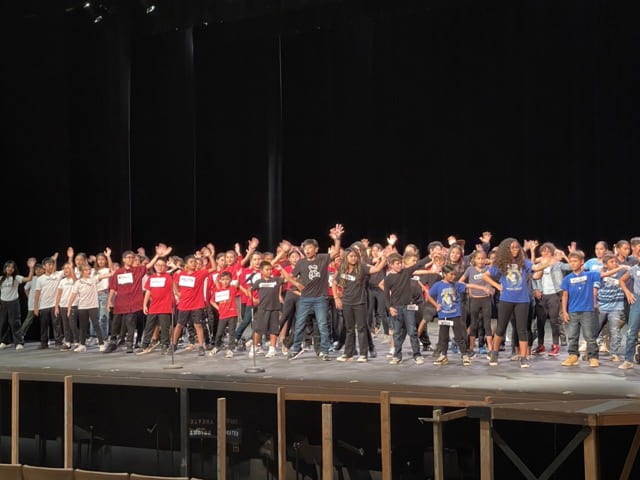
Continuing in its commitment to providing students in the Castle Complex a forum for learning about the performing arts and hopefully sparking a new passion, the Castle Performing Arts Center spent the first few weeks of school with our 5th graders. During these sessions, students learned how to project their voices, act, sing, dance, and how to be on stage. All of their learning culminated with a performance for the students’ ohana at the Caste Theater. We, the audience, were treated to a wonderful show full of song, laughter, and pride for our students. Mahalo nui loa to the CPAC educators and our 5th grade teachers: Mrs. Muniz, Kumu Māpuana, Ms. Maloney, Mrs. Sparks, and Kumu Wells.
STEM KICK-OFF – ADDRESSING THE CLIMATE CRISIS WITH NATURAL SOLUTIONS
One of Kāneʻohe Elementary’s key initiatives is to develop students’ ability to solve problems using the Engineering Design Process coupled with a Growth Mindset where learning from failure is an expectation. Each year, we strive to inspire our teachers to develop lessons that challenge students to design solutions for the problems around them. And every year, teachers consistently help students come up with innovative and creative projects including nets that capture micro plastics in the ocean, a re-designed makaha for Waikalua Loko Iʻa, and a waterwheel that converts hydro power from the ʻauwai into electricity. This year, we are stretching our brains to apply this process to addressing the climate crisis using natural solutions such as agroforestry. Given that climate change and urbanization played significant contributing roles to the devastating wildfires on Maui, this topic is of urgent concern. So we look forward to what our students design to address this challenge, especially as we strive to cultivate young leaders who will help Kāneʻohe and Hawaiʻi be sustainable beyond our lifetime.
Mahalo nui loa to climate and culture strategist Brandon Jirō Hayashi, environmental engineer Todd Taniguchi, and Kupu Hawaiʻi educators Makana Lewis and Linn Kuboi for guiding our learning.

WEAR PINK FOR MAUI WEDNESDAYS
We are continuing to Wear Pink for Maui on Wednesdays and invite all to continue joining us in letting “that light, that divine inspiration that Aunty Pilahi Paki says is given to you at your very beginning, come through and let your ALOHA join with the ALOHA of the collective to bring about healing.”
DAILY VIRTUAL PIKO – please join us
The Daily Piko helps us become centered and ready to learn. It helps us get on the same page, hearing one message of focus for the day and the week. If you are able, we begin at 8 AM everyday except Wednesday when we conduct the piko in-person.
https://hidoe.zoom.us/j/89410873182?pwd=dERWOEs2SldQdW5aZHpDM29vdWdhdz09
UPCOMING EVENTS
| Tue, Sept 12, 2023, 8:30 AM | Frank DeLima Performance |
| Wed, Sept 13, 2023, 4:30 PM | Wellness Committee Meeting Join by Zoom |
| Fri, Sept 22, 2023 | Waiver Day – No Students |
| Tue, Sept 26, 2023 | Fall Picture Taking Day |
| Wed, Sept 27, 2023, 4:30 PM | School Community Council Meeting Join by Zoom |
| Sat, Sept 30, 2023 | Campus Beautification Day |
| Fri, Oct 6, 2023 | Silver Linings Day End of Quarter 1 |
| Oct 9 – 13, 2023 | Fall Break Intersession – no school |

